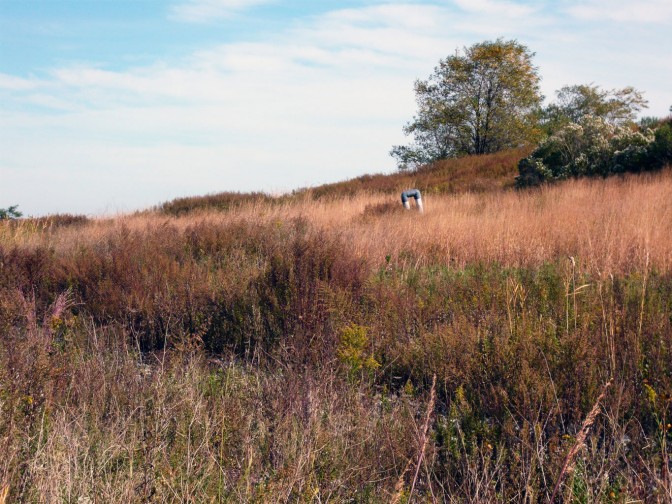Tags: education
Garbage Problems
In 2002, a year after the Department of Sanitation and and the Municipal Arts Society announced the design competition for the reuse of the Fresh Kills landfill, the Center for Urban Pedagogy (CUP) embarked on an investigative project called Garbage Problems aimed at understanding the processes behind waste management in New York City.
...MOREUrban ecology and infrastructure call for papers
MillionTreesNYC is hosting a research symposium on green infrastructure and urban ecology and is accepting submissions of papers to be presented at that symposium.
...MOREThe purpose of this symposium is to showcase research and projects that contribute to knowledge on urban landscapes, green infrastructure, and public health in cities and urban areas.
The Infrastructure of Urban Ecologies, tomorrow
Wednesday the 28th, Columbia University’s Graduate School of Architecture, Planning and Preservation (GSAPP) will host a discussion called The Infrastructure of Urban Ecologies. Speakers will include William Morrish, Dean of the School of Constructed Environments at Parsons, and Kazys Varnelis, Director of Network Architecture Lab at GSAPP.
...MORERecycling, composting and worms, this Saturday
The Council on the Environment of New York City and the Staten Island Compost Project will be co-hosting a recycling and home composting workshop this Saturday afternoon at the St. George Library on Staten Island. Tin can tricks and live worm bins, fun for all ages.
...MOREOn Manahatta
Landscape ecologist Eric Sanderson talks at TED about the Manahatta Project:
[youtube http://www.youtube.com/watch?v=3z1cCT2NP4k&w=507&h=370]
...MORERecent event photos now on flickr
We’ve updated our flickr stream with photos from the Composting Workshop we held at the end of August and last weekend’s reading from the works of Robert Frost. Both events were rainy but drew enthusiastic and game crowds and speakers.
...MOREThe college that runs on landfill gas
Among Treehugger’s 10 greenest colleges in the US is the University of New Hampshire (UNH), the first college in the country to run primarily on landfill gas. 85% of electricity and gas needs on the 5 million square foot campus are met by methane produced at a private, nearby landfill operated by Waste Management and piped to the school from a cogeneration plant.
...MOREZero-net energy
Zero-net energy buildings are designed to be as energy-efficient as possible and to offset what energy they do use through renewable power generation. Some have already been built, like the Omega Center for Sustainable Living in Rhinebeck, NY. The state-of-the art education center and natural wastewater treatment facility boasts not only zero-net energy use due to its solar array, but also zero-net water use.
...MOREThe Science Barge
[youtube=http://www.youtube.com/watch?v=wF44p7FG2AQ&feature=channel&w=507&h=370]
The Science Barge is a touring greenhouse that showcases techniques in sustainable agriculture. All the energy used by the barge is produced by solar panels, wind turbines and biofuels, and the water used for irrigation comes from stormwater or purified river water.
...MOREThe Wetland Machine
Another constructed wetland system, this time at the Sidwell Friend’s School in Washington D.C. The Wetland Machine by Andropogon Associates, Kieran Timberlake Associates and Natural Systems International incorporates two self-contained systems to recycle water, one for wastewater and one for stormwater.
...MOREThe Waterpod
The Waterpod is a a certified public vessel, a vegetable and chicken farm, a hodge-podge of sustainable systems (solar panels, rainwater collection, bicyle-produced electricity) and a recycled, floating home for six artists. They’ve lived there since Saturday and call it “a floating sculptural living structure designed as a new habitat for the global warming epoch.”
...MORENYC garbage and composting initiatives
Steve Cohen’s Consilience editorial on New York City waste management offers some good examples of how other cities deal with their garbage and offers some alternative proposals for our current system, with a focus on composting. He calls out the Lower East Side Ecology Center, which we’ve mentioned before, for its efforts to reduce the 47% of landfill waste that could otherwise be composted in New York City.
...MOREEnvironmental comic strips
Andy Lubershane’s weekly series Earthly Comics works to unpack environmental topics that can be difficult to understand: walkability; pervious concrete; cellulosic ethanol. Not the stuff of Marmaduke, but it does break some complicated ideas down into digestible chunks, and it’s pretty lighthearted.
...MOREManhattan, primeval
For the 400th anniversary of Henry Hudson’s arrival at Manahatta Island, the Wildlife Conservation Society and ecologist Eric W. Sanderson have prepared the Manahatta Project, a massive GIS-based portrait of the topography and ecology of Manhattan as it was in 1609.
...MORE



